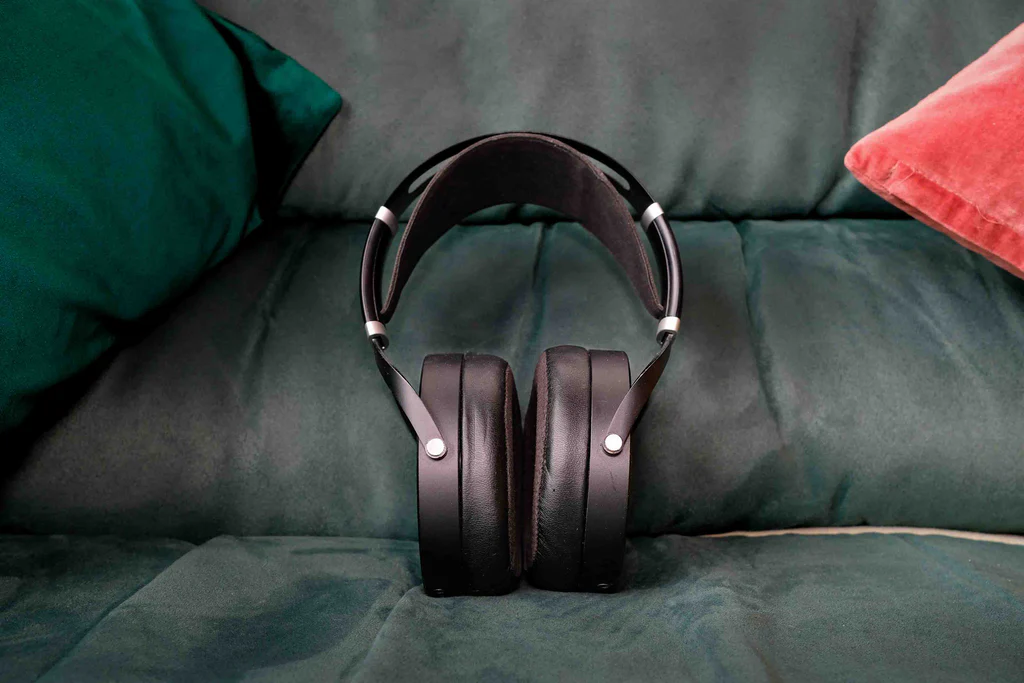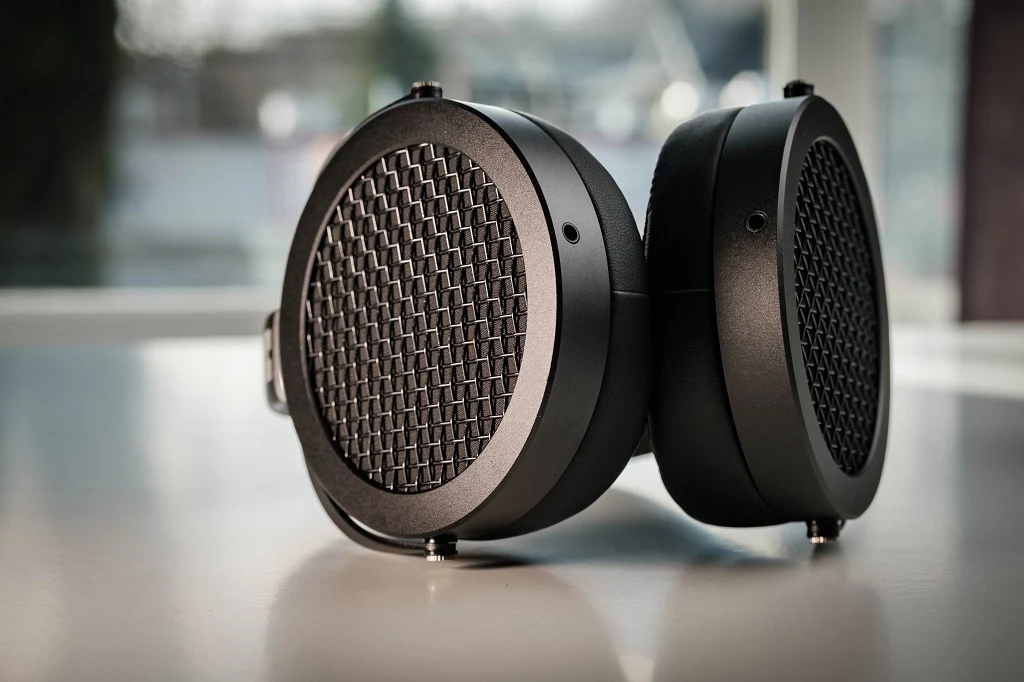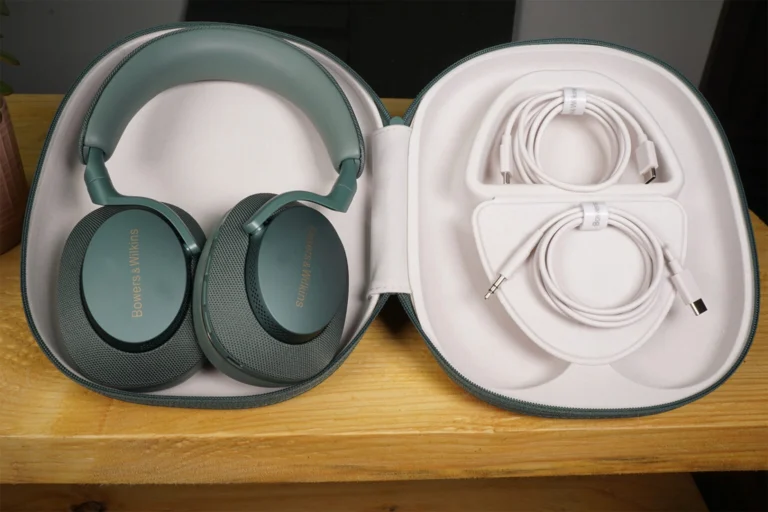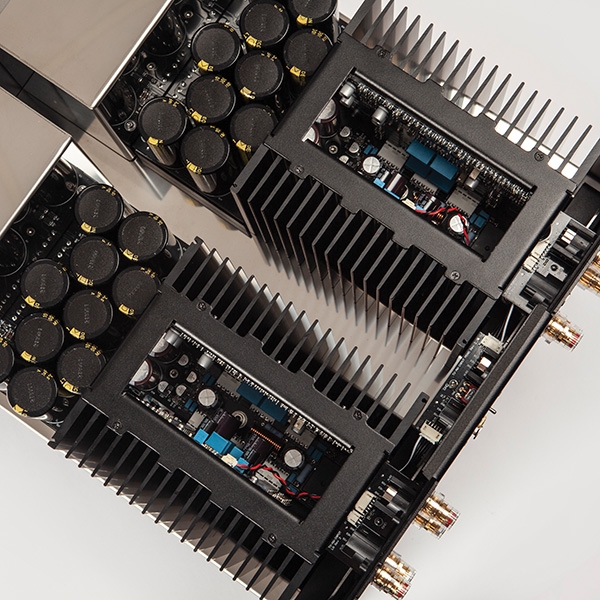HIFIMAN SUNDARA REVIEW 2023: MORE POWER!
AND A TOUCH OF VELOR
The Hifiman Sundara, which debuted in 2018, has gained not just popularity but also recognition as a benchmark for its category. And for good reason—you can get a lot of the features that more costly planar magnetic headphones can provide here for a comparatively small price. In addition, it has comfy cushions and a headband, and it is lightweight and small for a planar magnetic headset.
WHAT WE LIKE
- superior sound quality in class. The Sundara moves quickly and agilely. especially striking when powered sufficiently. A strong amplifier produces excellent bass extension, punch, and texture. The sound is clear, bright, and fast-moving without ever being abrasive.
- It sounds excellent from small sources and balances nicely with more effective, portable amplification.
- excellent construction, mostly made of metal
- cosy headband and cushions, with a moderate gripping force
- Round cups in the traditional Hifiman design
- suitable with a wide variety of pads
WHAT WE don’t LIKE
- Little swivel action.
- The cable is too short. It should come with an additional longer, preferably balanced, cable.
KEY SPECIFICATIONS
Drivers: Single-sided, planar magnetic magnets
Imperance: 37 Ω
Attenuation: 94 dB/mW
Range of frequencies: 6 Hz – 75 kHz
372 grams, or 9.4 oz, in weight.
1.5-meter-long cable with an amplifier connector (3.5 mm to 6.35 mm)
Headphones with detachable cords and 3.5mm connections
When people give or utilize affiliate links to buy on Amazon using our link here, they are helping to support this page.
Check out Amazon’s current pricing here: Sundara

I was really impressed when I initially received the Sundara and hooked it into my NAD C338 integrated, which has a powerful headphone output. This little headphone is really stylish. Even with somewhat strong amplifiers, it sounds incredibly quick and tight in its basic configuration. The headphones are quite responsive and have good, non-intrusive articulation. For the price, the amount of detail is quite great.
It’s a light headphone, to use planar magnetic terminology. I think these have a really great design. both in terms of appearance and usefulness. Even though I love the HE1000v2, I think the circular ear cups are better than the larger Hifiman “ear” or “egg” forms. However, many others find the HE1000v2 to be excessively enormous. The HE6, HE500, HE500, HE560, etc. styles are my favorites. Additionally, I prefer the suspension headband over some of the more recent Hifiman models with thicker padding.
THERE ARE NOT TWO VERSIONS OF THE SUNDARA
On the internet, there are rumors—or more accurately, a sort of accepted “fact”—that the Sundara exists in two variants. These are typically referred to as the 2020 and 2018 variants.
But as of April 20, 2023, when I contacted Hifiman’s customer service on the various versions, this is what they had to say:
“We’ve seen discussions about a purported “Stealth Revision” of the Sundara online, but I can tell you that this is untrue. Nothing changes—not the headband, not the driver, nor the cup. We believed the alteration was so small that we chose not to disclose it to the public: we modified the adhesive that was used on the PaliPads, which Sundara uses. That is all—the adhesive on the pads. We took this action to increase their resilience since, in warm weather, we discovered that they would gradually disintegrate over time. This new adhesive is more appropriate for situations like these.
Thus, the enhanced adhesive on the pads is the sole distinction. That’s fortunate because my 2019 Sundara pads quickly broke apart. Gluing the outer cloth to the attachment ring is a less-than-ideal method of creating a pad. I had no desire to purchase additional original PaliPads of the same design for my Hifiman Sundara. It is possible that the new pads are of higher quality, but after looking online, I discovered that some users—though they are by all means fewer—still appear to be having issues. In any case, there are a ton of pad options available for this earphone in various price ranges, so it shouldn’t be a major problem.
MORE ABOUT PADS
Using the original pads, I discovered that the bass response of the Sundara was not highly dependent on a good pad seal. I decided to purchase some of Hifiman’s Velour pads in place of the original PaliPads. Instead of being attached to the ring, they are held in place, like good pads should be, by a plastic cloth. This is the industry standard and is used in many of Hifiman’s other circular pads (think Beyerdynamic, Shure, ATH50x, etc.). From now on, the impression of utilizing the Velour pads will serve as the basis for this evaluation.

ANOTHER SUNDARA REVIEW
Why write another review of Hifiman Sundara when there are so many already out there? First of all, though, since I’ve finally figured out how to enhance the sundara’s sound,. It’s not flawless in its normal configuration—none of the headphones are. Don’t get me wrong, it’s a really decent headphone, especially given the price, but there are a few tweaks you can do to truly bring it to life.
Most notably, it misses a little bit in the low-bass in many configurations. Second, some ears may find the treble to be a touch too active at times.
For the pricing range, everything else is essentially far more than you could ask for. It has a pleasant tone, is quite concentrated, and moves quickly.
I have to admit that my relationship with the Sundara has been a little love-hate. Not because of the Sundara, by any means: I exchanged my HE-500 for it, which I later regretted, which is the source of the “hatred.” The fact that it is really comfy and a great headset for the price is what makes it so great.
For the pricing range, everything else is essentially far more than you could ask for. It has a pleasant tone, is quite concentrated, and moves quickly.
I have to admit that my relationship with the Sundara has been a little love-hate. Not because of the Sundara, by any means: I exchanged my HE-500 for it, which I later regretted, which is the source of the “hatred.” The fact that it is really comfy and a great headset for the price is what makes it so great.
For the pricing range, everything else is essentially far more than you could ask for. It has a pleasant tone, is quite concentrated, and moves quickly.
I have to admit that my relationship with the Sundara has been a little love-hate. Not because of the Sundara, by any means: I exchanged my HE-500 for it, which I later regretted, which is the source of the “hatred.” The fact that it is really comfy and a great headset for the price is what makes it so great.
But I don’t regret the trade I made all that much now that I’ve finally worked out how to make it the headset I think it should be and a headphone I can’t take off my head. What then did I do?
FIRST: VELOUR AND A LITTLE EQ
I started by giving the Sundara a longer cable fitted with a 6.35 TRS connector. I then used my RME ADI 2 to add 3–6 dB of bass, and I swapped out the pads for the $20 USD Hifiman Velour pads. When combined, that really improved the already excellent Sundara to my taste. Together with the additional bass, the pads lessened the treble’s bite to create a broader, more expansive sound. It manages the additional 3–5 dB increase effectively, which isn’t often the case with headphones. There’s always a trade-off, and the main drawback is that the sound stage became somewhat more wide and diffuse.

SECOND: POWER!
Let me start by saying that, from my LG V40 phone, which has a quite strong headphone amplifier (for a phone), the Sundara does sound good at full volume.
Having said that, it requires a special amplifier. I used amplifiers in unbalanced mode for a long time without a balanced connection because I believed it would not make a difference. But after connecting the Sundara to a strong balanced amplifier and giving it a balanced connection, I discovered that, if you give the Sundara enough power, you don’t need to EQ the bass! The bass significantly changed after Auralic Taurus was operating in balance.
One of the best things about the now tragically discontinued Auralic Taurus is that you may listen to unbalanced via 4-pin XLR by just pressing a button that switches between balanced and unbalanced operation without altering the connection. When I listen to recordings with a lot of bass, there is no denying that, once I have adjusted for volume variations, the bass is stronger and longer when I switch to balanced mode.
.. It’s evident from listening to some of those test recordings with the bass frequency that it doesn’t roll off as it did from a weaker source. Sundara, in my opinion, works admirably at 30 hertz. When it comes to volume at 30–40 hertz, my phone and the Taurus differ quite a little.
Additionally, the Sundara was elevated to head-fi paradise when powered by my Cary SLI-80 amplifier’s speaker taps.
Not a single bass note is missing. There was a very subtle advance in the mid-range. The treble no longer has any hint of minor edginess; instead, the detail seems smooth. It’s quite similar to my recollection of the HE-500 with the Taurus or Bryston balanced and the SLI-80, and guess what? A HE-500 is on its way to me. Pay attention.
WAIT, THERE IS MORE…
The electrical tape mod is a well-known mod in Grado World. Simply put, it involves wrapping electrical tape over the outside of your headphone pad to prevent sound, particularly bass, from escaping. Did my actions on the Sundara have any impact? It did, but not in the way I had anticipated. Although I had anticipated a bass bump, the bass actually cleaned up the rather diffuse sound stage and made everything sound more precisely placed—like the staging I remembered from back when the original pads were there. But in the end, I removed it. The clean velour pads provide a sound experience that I find equally enjoyable as the tape mod.

COMPARISONS
The amazing Bryston BHA-1 amplifier was used for the majority of comparisons because of its balanced and noticeably more powerful outputs, while the competition’s output was unbalanced and had less power. An RME ADI-2 FS DAC served as the source.
SENNHEISER HD660S VS HIFIMAN SUNDARA VELOUR
The HD660S already offers less deep bass than the Sundara when both are operating out of balance. The bass of the Sundara differs significantly when it is operated from the Taurus’s balanced out. Additionally, the Sundara has a wide soundstage, wonderful voices, and a good rendition of instruments like trumpets and violins, among others.
A little more explicit texture is provided by the HD660S’s mid-range-focused instrumentation and voices. It feels somewhat more luminosous than my Velour Sundara.
I keep listening, and the sensation remains the same when I go on to the Bryston BHA-1, the Sundara balanced, and the HD660S unbalanced. When powered sufficiently, the Sundara excels in the bass range. They are not too far away in the mid-range high frequencies; the Sennheiser’s mid-range is a little more forward-facing and feels a little brighter overall. Although the soundstages are very similar, the Sundara may seem a little more spacious.
In conclusion, I think the Sundara Velour version, which has been amplified, has a more easy and well-balanced sound overall, with better bass performance.
SHURE SRH1840 VS HIFIMAN SUNDARA VELOUR
My 1840 has hardwired balanced headphones, but I need an adaptor to run it unbalanced for these tests.
Essentially, a balanced Sundara produces better bass output. In terms of mid-range and treble reproduction, they are comparable, but once more, I think the balanced Sundara has a more fluid and well-rounded presentation. It should be noted that the 1840 performs better in balanced mode when powered by a strong amplifier, so this comparison is not quite fair. Still, because the 1840 is far more costly, perhaps it is a fair comparison after all.
In any case, I would much rather have a well-powered, well-balanced Sundara over a valve 1840 in the bass range.
Regarding separation, detail, and the presentation of the mids and treble, they are fairly similar, as is the sound stage. When it comes to bass performance and overall “snappiness,” however, the balanced Sundara is unmatched.
FOCAL ELEAR (ELEX) VS HIFIMAN SUNDARA VELOUR
Again, as with the SRH1840, the Focal Elear also excels with power, even though it is quite sensitive. It does sound so much better balanced than the BHA-1 that I feel that it totally transforms. The bass tightens up, and it cleans up the treble, making the midrange come more forward.
However, since it is also a lot more expensive, I will compare it unbalanced in this test with good conscience.
Focal Elex is, from what I have read, just an Elear with different pads, so even though I don’t have the Elex here, this might feel relevant for Elex owners. even though, of course, this review is partly about pad effects on the performance of a headphone.
This comparison was more difficult than the previous ones. Elear offers a higher bass quantity, which is the most noticeable change right away. Despite the fact that the Sundara is not lacking in any area, it also seems to have finer detail. It feels strange to compare these two because I know how much better the focal sounds are when amplified correctly in balanced mode. However, since the Focal is considerably more costly, it would be unfair to compare the amplifier outputs of the two. In general, I think the Sundara has a tighter, more detailed sound that is more evenly distributed and has a more noticeable range.
It is difficult to choose an Elear over the more balanced-sounding Sundara because of its excessively sloppy bass, highs, and even higher frequencies. This is the main disadvantage of an ear that has not been properly amplified.
BEYERDYNAMIC DT1770PRO VS HIFIMAN SUNDARA VELOUR
The Beyerdynamic is, of course, a closed headphone, but when you have the velour pads on, as I do, they are to be regarded as semi-open.

The Beyerdynamic has great clarity and good bass and can deliver some real low-end thump. However, I do not find that Sundara stands back in any regard in the bass region, but rather the opposite. I find it delivers more texture, and it reaches lower. In overall tonality, the Beyerdynamic is brighter and sharper, and the Sundara has a more easygoing and effortless sound. I like the DT1770PRO but prefer the Sundara.
QUAD ERA-1 VS HIFIMAN SUNDARA VELOUR
This is an intriguing analogy now. One of the very few expensive headphones that sound fantastic on my phone (LG V40) is the Quad. It doesn’t require as much power as the Sundara, but it still climbs with adequate gear.
In many places, it costs more than twice as much as the Sundara. While it may not be twice as nice as a well-amplified Sundara, it is still superior in many aspects. The separation is improved, and the backdrop is darker. Although it is not inherently superior to the Sundara, it does have excellent bass performance.
However, there are significant differences in the sound signatures of the two headphones, and switching between them requires some getting used to. By direct contrast, the Quad feels more closed in and narrower in its stage, but it also offers a more accurate and focused image. The Sundara presents itself in a more laid-back and transparent manner.
Both of these are quite appealing to me, and Quad ERA-1 hasn’t received nearly as much attention as it should. Watch this space for an upcoming review.
AKG K701/K702 VS HIFIMAN SUNDARA VELOUR
The K701/K702, which are identical headphones save for color and cord, are excellent low-cost entry-level high-fidelity headphones. Moreover, the Q701 is nearly the same. Sadly, you can’t run them in balanced mode unless you open them up and re-cable them, which is a common practice for skilled headfiers. They do, however, require electricity to shine. Keep an eye out for my balanced K702 when it arrives.
In any case, the Sundara has a significantly deeper and stronger bass performance than the AKG K701, while the latter has a more forward-sounding midrange. This is the most noticeable difference between the two models.
For various reasons, I like both of them in the midrange. The AKG sounds a bit more lively, while the Sundara is lush and lovely. Soundstage and treble are comparable. Once more, though, the Sundara excels in the deep bass range.
HIFIMAN HE-500 VS HIFIMAN SUNDARA VELOUR
I was naturally quite excited to compare them when I finally held the HE500 (with Velour pads) at the end of the evaluation. What a mouthwateringly delectable headset the HE500 is! More so than what I recall from my last set. Sundara is not too far away with the velour cushions on the well-amplified device. Although they are unmistakably brothers, the HE500 has a warmer character overall and a deeper, more noticeable bass.
Without sacrificing detail, the mid-range is smoother. Although the HE500 is unquestionably my favorite, I’m happy to report that the Velour Sundara is really quite close in terms of sound character and quality. Therefore, Sundara, which has velour cushions and a strong amplifier with a warmish tone, will get you a long way if you want a taste of the renowned HE500.
AMPLIFICATION
As you have undoubtedly already read several times, the Sundara is an excellent headphone, and I hope that I have made that clear. It does, however, truly punch above its weight—and does so quite powerfully—when paired with a strong amplifier.

To obtain fantastic sound from the Sundara, you don’t need to spend a lot of money on an amplifier like the Bryston BHA-1 or the Auralic Taurus, but you should definitely consider solid, powerful (mainly balanced) amplifier alternatives. Although I lack measuring tools, I’m positive that an appropriate amp produces a better measurement in the lower bass than one without one.
The Cary SLI-80, which powers the headphones from the speaker taps, is my favorite amplifier. The sound quality throughout the spectrum improves, with the bass becoming punchier and deeper. With the Taurus and BHA-1, comparable outcomes are obtained. However, as mentioned previously, the Sundara sounds better without the need for a costly tube amp or high-end balanced amp.
The Hifiman Sundara sounds amazing even when connected to modest headphone amplifiers. It sounds nice straight from my LG V40 phone, but it sounds much better when connected to my phone-powered Audio Quest Dragonfly Black and Schiit Fulla. With the Lake People G103 and my NAD C338 integrated, it sounds much better; with the RME ADI-2 DAC FS and the venerable Violectric V200, it sounds even better.

My experience with the Sundara has shown me that the more force you give it, especially in the bass, the better it gets. I suppose any strong balanced headphone amplifier—or even a very strong single-ended amplifier—will do admirably. Think about utilizing the Sundara from a good speaker amp’s speaker taps. Like many other Hifiman headphones, the Sundara is incredibly light in weight.
CONCLUSION
For the price, the Sundara is a fantastic-sounding headset. Its sole true drawback—the absence of deep bass—is eliminated when you give it an extremely strong amplifier. Giving it a lot of power would transform it from a can that is a little shy of bass to a dream come true for bass enthusiasts. It has a very deep, rich, and prominent bass that is never overbearing. It will also sound more fluid, open, subtle, and smooth overall with a strong amplifier.
The Sundara will occasionally have its lively treble subdued and acquire a pleasant and more balanced sound character with the velour pads installed.
This assessment focuses on the Sundara’s current and potential levels of excellence. The Sundara will repay you greatly if you provide it with great power. Try your hand at some pad-changing without fear.
I now own a sizable collection of headphones, which includes models like the AKG K701 and Sennheiser HD650, as well as the Focal Utopia and STAX SR009. I still listen to the Hifiman Sundara, but only with a strong amplifier. It sounds amazing and is powered by the speaker taps of my Cary SLI-80 tube speaker amp. It’s a pleasure to hear the tone, punch, clarity, and expansive soundstage. The same is true with my strong headphone amplifiers, the Bryston BHA-1 and the Taurus. With a lot of texture and a subdued presence, the bass reaches deep. The treble is crisp and quick, while the mid-range is flavorful and well-balanced. You may turn up the volume and yet enjoy a really relaxing listening experience.
The Hifiman Sundara is highly recommended, to sum up. While it performs admirably when supplied by a strong amplifier, it sounds excellent when powered by modest sources. Try alternative pads and adjust them to your preference if they’re not exactly right out of the box. You won’t be sorry you did. Sundara intends to stay.






